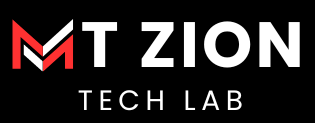Blockchain, once a niche concept, has rapidly gained mainstream attention due to its association with cryptocurrencies like Bitcoin. But what exactly is blockchain, and how does it work? In this comprehensive guide, we’ll delve into the intricacies of blockchain technology, exploring its origins, key concepts, and its transformative potential across various industries.
The Genesis of Blockchain: Satoshi Nakamoto and Bitcoin
The blockchain story begins with a mysterious individual or group known as Satoshi Nakamoto. In 2008, Nakamoto published a groundbreaking whitepaper titled “Bitcoin: A Peer-to-Peer Electronic Cash System.” This paper introduced the concept of blockchain as the underlying technology for Bitcoin, a decentralized digital currency.
Understanding the Basics: What is Blockchain?
At its core, blockchain is a distributed ledger technology (DLT) that records data securely and transparently. It consists of a chain of blocks, each containing a timestamp and transaction data. These blocks are linked using cryptographic techniques, creating a secure and tamper-proof record.
Key Features of Blockchain Technology
-
Decentralization: Blockchain operates on a network of computers, or nodes, spread across the globe. This decentralization eliminates the need for a central authority, making the system resistant to censorship and manipulation.
-
Security: Blockchain uses cryptographic techniques to secure transactions and data. Each block is linked to the previous block using a cryptographic hash, making it extremely difficult to alter or tamper with existing data.
-
Transparency: All transactions on a blockchain network are publicly visible, providing transparency and accountability. Anyone can verify the authenticity of transactions and the balance of accounts.
-
Immutability: Once a transaction is recorded on a blockchain, it becomes immutable, meaning it cannot be changed or deleted. This provides a high level of data integrity and reliability.
How Does Blockchain Work?
-
Transaction Creation: A user initiates a transaction by sending cryptocurrency from one address to another.
-
Broadcasting: The transaction is broadcast to the network of nodes.
-
Validation: Nodes validate the transaction by verifying the sender’s balance and ensuring the transaction is legitimate.
-
Consensus: A consensus mechanism is used to agree on the validity of the transaction and add it to the blockchain. Bitcoin uses a proof-of-work consensus algorithm, while other cryptocurrencies may use different mechanisms.
-
Block Creation: Once a consensus is reached, the transaction is added to a new block along with other verified transactions. The block is then added to the existing blockchain, creating a new link in the chain.
The Benefits of Blockchain Technology
Beyond cryptocurrencies, blockchain has the potential to transform various industries. Some of the key benefits include:
-
Increased Efficiency: Blockchain can streamline processes and reduce costs by eliminating intermediaries.
-
Enhanced Security: The immutability and transparency of blockchain provide a high level of security for data and transactions.
-
Improved Transparency: Blockchain can increase transparency and accountability in industries prone to corruption or fraud.
-
New Business Models: Blockchain can enable new business models and create new opportunities for innovation.
Potential Applications of Blockchain
-
Supply Chain Management: Blockchain can track the movement of goods and materials through a supply chain, ensuring transparency and authenticity.
-
Healthcare: Blockchain can secure patient records and facilitate the sharing of medical data.
-
Voting Systems: Blockchain can provide a secure and transparent way to conduct elections.
-
Identity Management: Blockchain can be used to create secure digital identities.
-
Intellectual Property: Blockchain can protect intellectual property rights by recording ownership and usage information.
Challenges and Considerations
While blockchain offers significant potential, it is not without its challenges. Some of the key considerations include:
-
Scalability: Blockchain networks can become congested as the number of transactions increases, affecting transaction speed and costs.
-
Energy Consumption: Some consensus mechanisms, such as proof-of-work, are energy-intensive.
-
Regulatory Landscape: The regulatory environment surrounding blockchain is still evolving, creating uncertainty for businesses and developers.
-
User Experience: The user experience for interacting with blockchain-based applications can be complex for non-technical users.
The Future of Blockchain
Blockchain technology is still in its early stages, but its potential is vast. As developers and businesses continue to explore its applications and address its challenges, we can expect to see blockchain playing an increasingly important role in our lives. From streamlining supply chains to revolutionizing finance, blockchain has the power to transform industries and create a more efficient and transparent world.
Conclusion
Blockchain is a revolutionary technology with the potential to reshape the way we interact with the digital world. By understanding the underlying concepts and exploring their potential applications, we can unlock the full potential of blockchain and its transformative power. As blockchain continues to evolve, it is essential to stay informed about its developments and explore the opportunities it presents.

